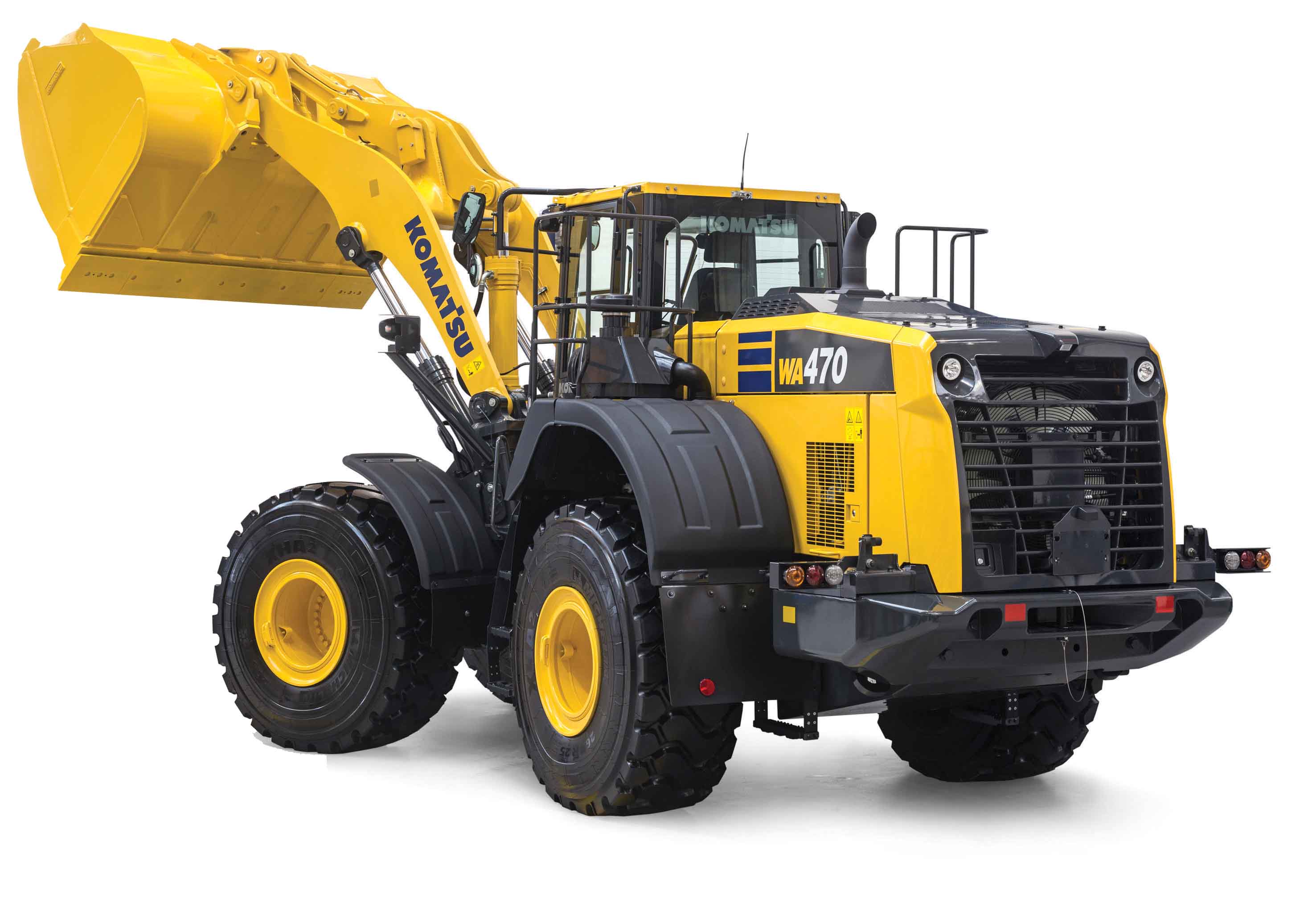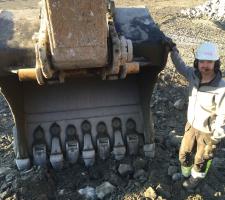
Moving materials ranging from aggregate products to construction rubble is tough work that causes extensive wear and tear on machines. “Stone is a demanding material by nature,” says Rasmus Forsman of Swedish company Hallstaviks Schakt.
“The degree of wear depends on the type and hardness of stone you’re dealing with. Other factors are the size and form of the material and the presence of other materials such as metal. Metallic ores in mining applications create some of the biggest demands on moving equipment.”
This is the environment faced daily by equipment working on quarry sites worldwide, which is built rugged to tackle tough loading tasks.
Family-owned company Hallstaviks Schakt, based in northern Roslagen, operates in stationary and mobile stone crushing; excavation and demolition; foundation and road building, and equipment service, where shifting stone is a big part of its activities.
Since June 2015, the company has been trialling a recent development from
“Our machines are always on the go. They take a constant battering. Minimising wear is always an important goal when you operate machinery. But when it comes to moving stone, it can have a very big effect on your bottom line,” says Forsman. “Time is money. Typically, we might need to rebuild a bucket every 3-4 months when exposed parts wear out. It is a job that can take 20-30 man hours. That’s expensive downtime. And for a company with a lot of equipment, it can add up to a substantial annual cost.
“We can clearly see that there is less wear on the bucket than we would expect for this amount of hours and tonnes shifted.” The trial is ongoing, but Forsman expects to adopt the Sandvik HX900 wear segments more widely in the future.
Meanwhile,
The company’s novel HIOS IIIB technology, which uses two pumps and control valves to reduce fuel consumption and cut costs, is said to optimise working efficiency.
The ZX490LCH-6 can save up to 5% fuel in Eco mode, with the same productivity as the previous model. This hydraulic technology also has a positive impact on productivity, as it has more efficient swing, boom lowering, arm and bucket roll-out.
After announcing a prestigious package deal valued at just over £1.5 million (US$ €2.2 million/€1.95 million) for 21 Volvo excavators ranging from 2.7tonnes-28tonnes in operating weight,
Powered by Volvo’s Tier 4 Final/Stage IV compliant D16 engine, the excavator delivers increased horsepower of 374kW.
With Volvo’s heavy-duty and extreme-duty buckets, built using wear resistant plates, are said to be perfect for quarrying and mining applications.
The EC750E can be equipped with a Volvo hydraulic breaker to degrade challenging materials, and the company also offers an attachment management system, allowing the settings for up to 20 different attachments to be stored. The EC750E offers an electro-hydraulic system, optimised to operate in harmony with the engine, delivering greater operator control and productivity. The hydraulics, in combination with Volvo’s advanced ECO mode, works in unison to reduce internal losses in the hydraulic circuit, resulting in improved fuel efficiency without loss of performance in most operating conditions.
The EC750E digging performance yields breakout forces of 328kN and has a retractable undercarriage with an optimised counterweight.
An integrated work mode system is designed to enhance fuel efficiency and machine performance, allowing operators to choose the best work mode for the task at hand, ensuring the correct configuration for any job. A major order for Volvo excavators has come from Leeds, northern England-based Howard Plant Hire, says Volvo. It was awarded following a competitive tender process and an appraisal of the proposed machines’ lifetime operating costs. Included in the order are an EC27C; two 5tonne EC50Ds, and four ECR88D reduced swing compact machines. Their larger brothers include three ECR145E reduced swing excavators; two EC140Es; two EC160Es; five 22tonne EC220Es, and two EC250Es.
Safety is a key design element for the new HL970 and HL980 wheeled loaders, says
For added safety, the machines have large access steps to the cab, convenient grab handles and upper guard rails near the engine compartment, and the larger cab improves cab entry and exit.
Ergonomically positioned operator switches, controls make it easier to quickly access critical functions. An improved rear-view camera delivers higher resolution and enhanced night-time visibility.
In addition to being more fuel-efficient, the new HL series features an automatic engine shutdown when it enters into an idling state. Operators can select operating mode and idling time depending on work environments which improves its efficiency even further.
The Eco Pedal gives feedback via increased pedal pressure to alert the operator to stay within the engine’s economical operating range.
The machines have a fivespeed automatic transmission with a lockup clutch (HL955-HL980) that boosts efficiency and minimises heat, and also feature a travel speed limit control where the operator can limit the maximum travelling speed within a range of 20km/ hour to maintain optimal effectiveness under all working conditions.
Hidromek is broadening its range of excavators with the addition of a new heavyweight model in the shape of its HMK490LC. Weighing 50.8tonnes in standard specification, the machine has been designed to meet the needs of heavyduty applications such as in quarrying. Power comes from an
The standard specification for the excavator includes a 2.7m³ bucket as well as a 6.55m boom and a 2.65m arm. The HMK490LC uses twin
As with the existing Komatsu HB215 hybrid machine, the new model is also said to offer considerable savings in fuel consumption, as is Komatsu Europe’s new WA470-8 wheeled loader.
Power comes from a Tier 4 Final/Stage IV engine and its fuel consumption is up to 8% lower than for the WA470-7.
This system is said to vary airflow to match engine and load demand. The low speed, high-output torque engines are specially designed for the E-series excavators, while the machines also feature innovative negative flow hydraulics.
The machines also make use of the Advanced IPC (Intelligent Power Control) system, LiuGong’s own new-generation, computer-aided power controls that integrates the mechanical, electrical and hydraulic systems, delivering high efficiency and lowering fuel consumption.
Also being built at its Polish plant is the new 856H wheeled loader, which is offered in a Tier 4 Final/Stage IV compliant version for the European market.

















